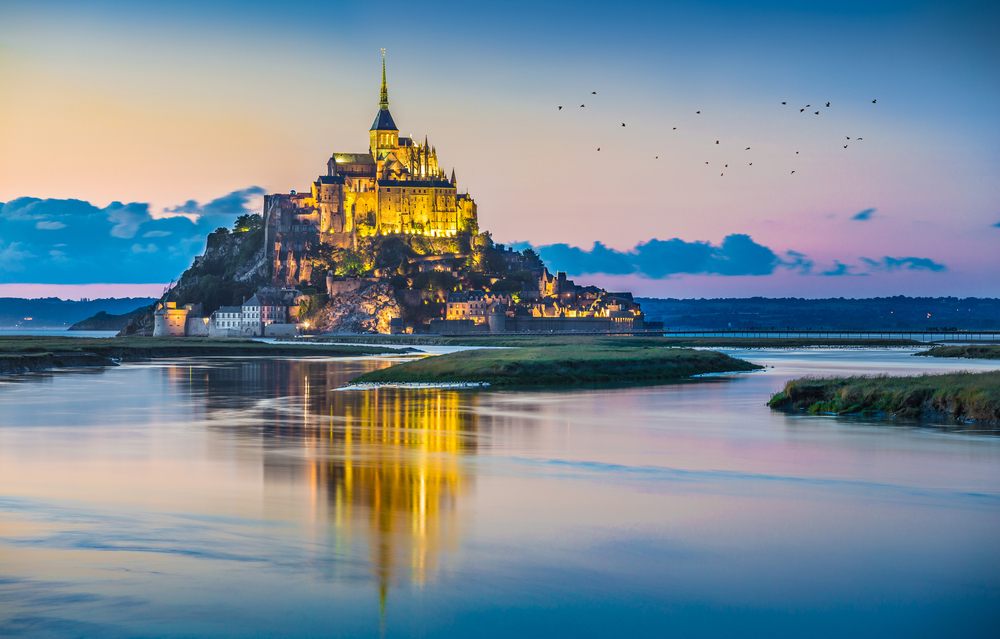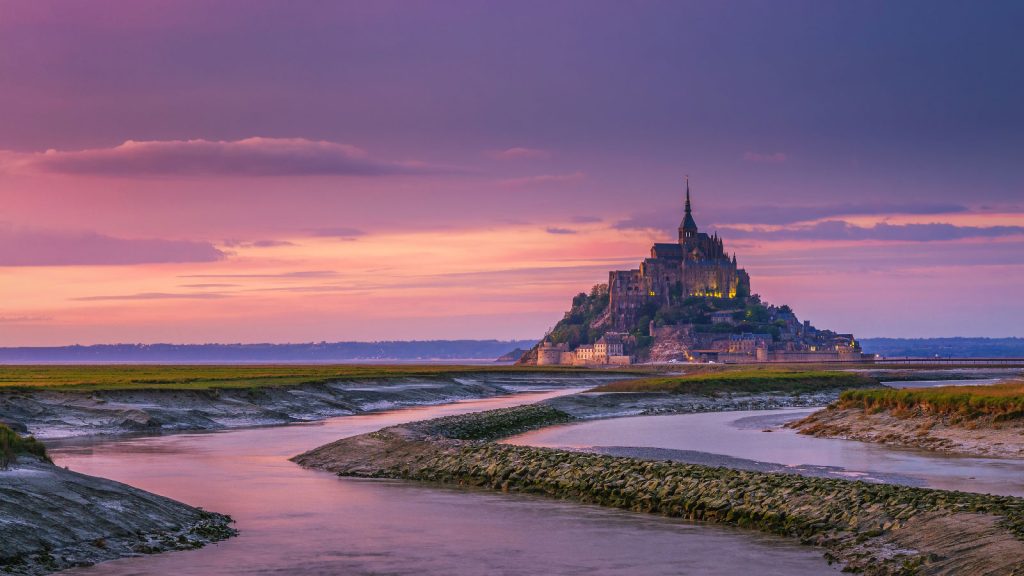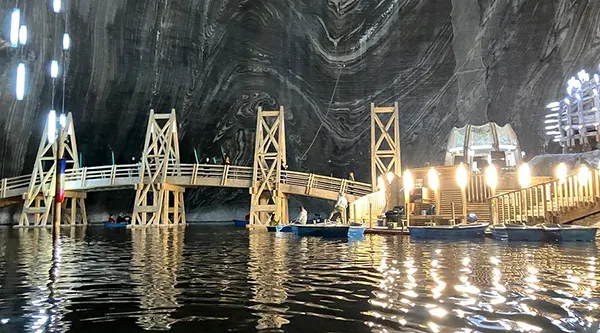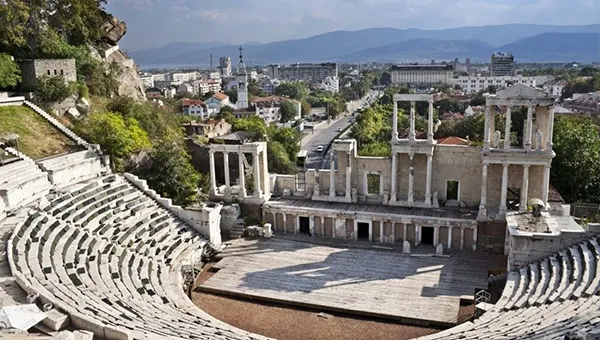
Mont-Saint-Michel: A Historic Marvel of French Architecture
Mont Saint-Michel, one of France’s most iconic landmarks, is a remarkable blend of natural beauty and medieval architecture. Rising dramatically from a rocky tidal island in Normandy, it has captivated millions of visitors with its storied past and stunning surroundings. The site, a UNESCO World Heritage Site since 1979, represents a convergence of history, spirituality, and architectural ingenuity. Below, we explore its fascinating history, architectural wonders, and cultural significance.
History of Mont Saint-Michel
Mont Saint-Michel’s origins date back to the 8th century when the Bishop of Avranches, Aubert, claimed to have been instructed in a vision by the Archangel Michael to construct a church on the island. The early foundations of the site began in 708, eventually evolving into a grand Benedictine abbey. Throughout the Middle Ages, the abbey became a revered pilgrimage site, drawing worshippers from across Europe.
The island’s unique tidal characteristics played a significant role in shaping its history. The extreme tides of the region made Mont Saint-Michel accessible only at low tide, providing natural protection from invaders. This geographical feature contributed to its reputation as a sacred and almost mystical place.
Over centuries, Mont Saint-Michel withstood numerous sieges, particularly during the Hundred Years’ War. Its strategic location and robust fortifications made it an impregnable fortress, earning it the nickname “The Wonder of the Western World.” During the French Revolution, the abbey was repurposed as a prison, a function it served until 1863.
Modern Preservation Efforts
The late 19th and 20th centuries saw significant restoration efforts to return Mont Saint-Michel to its former glory. Architects and historians worked tirelessly to preserve its intricate stonework and historic structures. Today, its preservation is managed by France’s Centre for National Monuments, ensuring its history and architectural splendour are maintained for future generations.
Ongoing conservation efforts include managing the surrounding environment to prevent silting and ensure the tidal island’s unique landscape is preserved. These projects highlight the global importance of Mont Saint-Michel as a cultural and historical treasure.
Architectural Marvels of Mont Saint-Michel
The architecture of Mont Saint-Michel is a testament to the ingenuity and craftsmanship of medieval builders. The abbey, perched atop the rocky island, features a mix of Romanesque and Gothic styles, reflecting its centuries-long construction period. Its imposing spire, adorned with a gilded statue of Archangel Michael, soars into the sky, symbolising divine protection.
The lower levels of the island include a medieval village that has been preserved with remarkable authenticity. Visitors can explore its cobblestone streets, ancient inns, and shops selling local crafts, immersing themselves in the ambience of a bygone era. The narrow pathways and quaint architecture create an enchanting journey through history.
The fortifications, complete with ramparts and watchtowers, reveal the island’s military significance during historical conflicts. These robust defences, combined with the island’s natural isolation, contributed to Mont Saint-Michel’s resilience against invaders.
The Great Hall and Cloisters
Among the abbey’s many highlights are the Great Hall, once used for receiving pilgrims, and the serene cloisters. These areas provide insight into the monastic life that thrived here for centuries and offer visitors a peaceful retreat to reflect on the site’s spiritual heritage.
The cloisters, with their intricate arches and open design, are particularly striking. They symbolise the connection between the earthly and the divine, an enduring theme in Mont Saint-Michel’s history. The Great Hall, meanwhile, serves as a reminder of the abbey’s importance as a spiritual and administrative centre.

Cultural and Spiritual Significance
Mont Saint-Michel is not just an architectural masterpiece but also a living symbol of faith and perseverance. For centuries, it has been a centre of spirituality, attracting pilgrims seeking divine blessings. Even today, the abbey hosts religious ceremonies and remains a focal point of Christian devotion.
The island also serves as a cultural hub, hosting annual events like concerts and medieval festivals. These celebrations bring the history and traditions of Mont Saint-Michel to life, offering visitors a unique opportunity to connect with the past.
Beyond its religious significance, Mont Saint-Michel has become a symbol of resilience and adaptability. Its long history, shaped by natural forces and human ingenuity, continues to inspire people from all over the world. The island’s unique environment and cultural heritage make it a must-visit destination for anyone interested in history and architecture.
Tourism and Accessibility
Mont Saint-Michel welcomes over three million visitors annually, making it one of France’s most visited tourist destinations. A modern causeway, completed in 2014, ensures year-round accessibility while preserving the tidal island’s unique character. Visitors are encouraged to explore its winding streets, dine in local eateries, and experience its captivating history firsthand.
Guided tours and audio guides provide rich historical insights for those eager to delve deeper into the abbey’s past. Additionally, sustainable tourism initiatives are in place to ensure the preservation of Mont Saint-Michel’s unique landscape and cultural legacy for generations to come.




